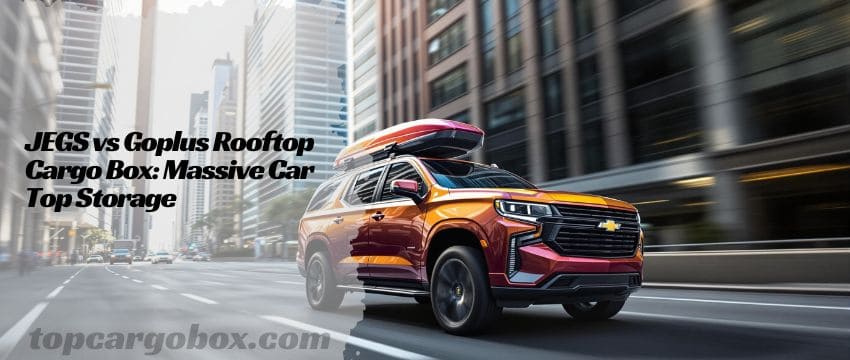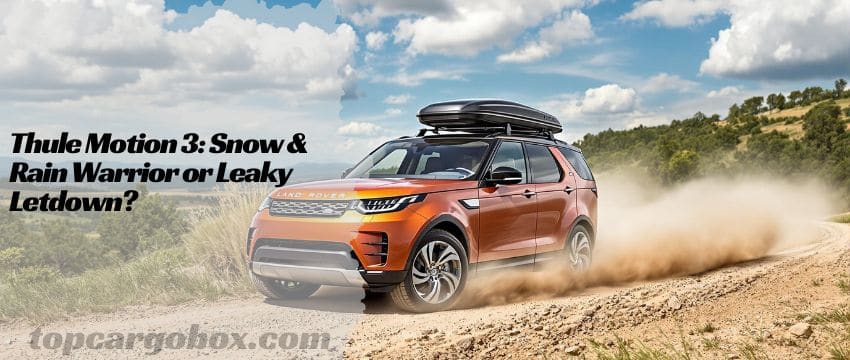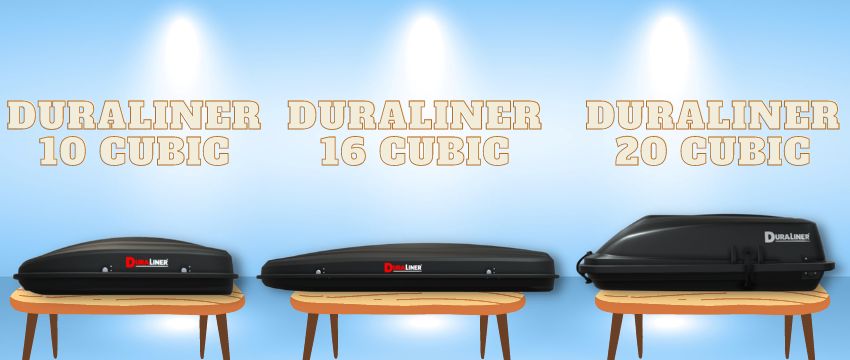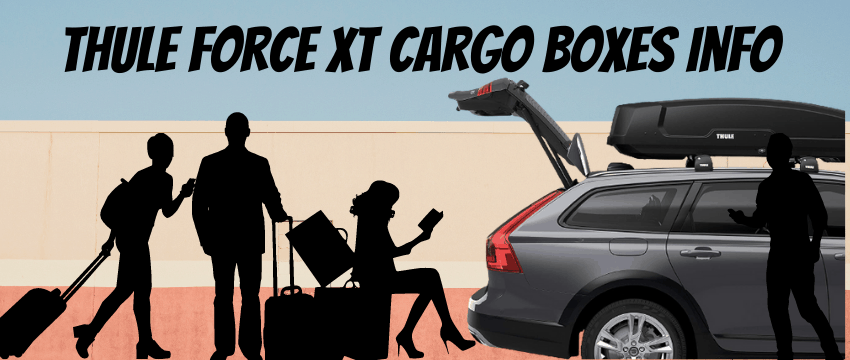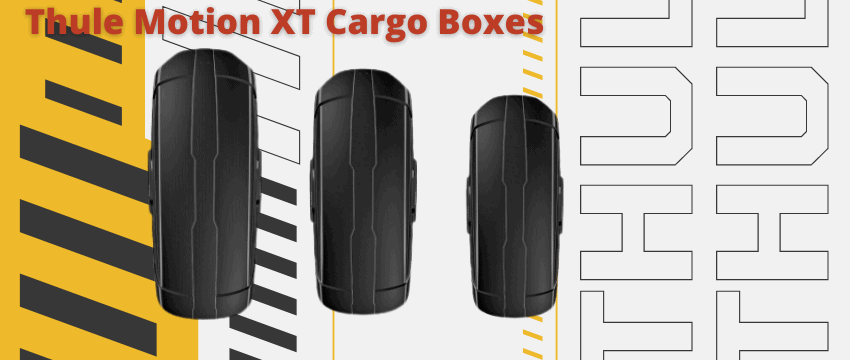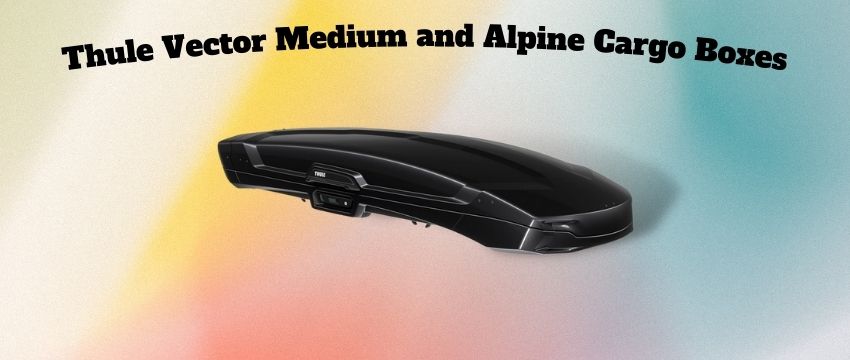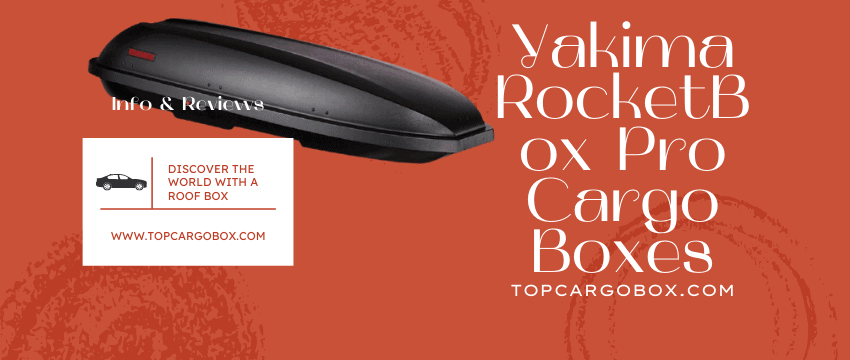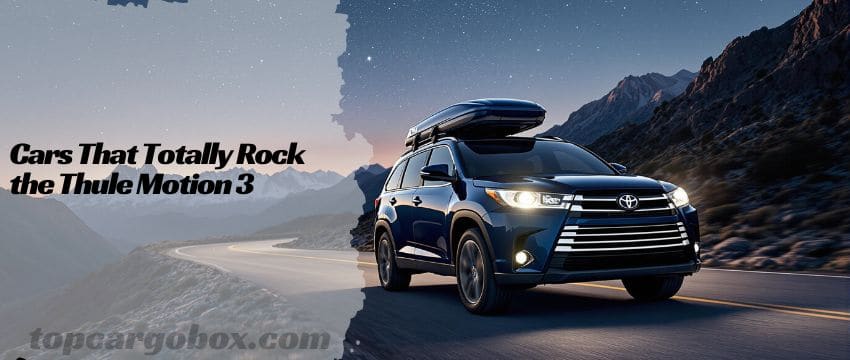How’s it going? Ever feel like your car is bursting at the seams on a road trip? Like you’re playing a frustrating game of Tetris just to fit the kids, the dog, and maybe one suitcase? What if there was a smarter way to unlock 18 cubic feet of extra space without needing a bigger vehicle? Enter the JEGS Rooftop Cargo Carrier – the heavy-duty, weatherproof, Made-in-USA solution that legit changes the game for travelers, campers, and anyone who needs more room. Forget the stress of stuffing everything inside; let’s talk about how this box solves your packing nightmares.
Why Your Car Needs the JEGS Rooftop Box (Like, Yesterday!)
Seriously, why struggle? We’ve all been there. You’re heading out on that epic family camping trip or a long-awaited vacation, and the trunk just isn’t cutting it. Stuff is piled high, visibility is shot, and the kids are complaining they can’t move their legs. It sucks. The JEGS carrier is designed specifically to tackle this head-on.

- Massive Capacity Meets Smart Design: Offering a whopping 18 cubic feet of storage, this box swallows gear like a champ. Think multiple sleeping bags, bulky tents, camp chairs, coolers, air mattresses, duffel bags – you name it. One real user effortlessly packed “4 sleeping bags, two umbrella chairs, some blankets, a rug for inside the tent” with room to spare! Imagine freeing up that much space inside your car. Suddenly, the dog has his spot back, and everyone can breathe. How awesome is that?
- Weatherproof Peace of Mind: Ever been caught in a sudden downpour and worried about your luggage getting soaked? Forget it! The JEGS box features a weather-tight seal and is constructed from durable, water-resistant HDPE plastic. Your gear stays dry and protected from rain, snow, dust, and highway grime. No more arriving with soggy sleeping bags or muddy suitcases. That’s legit peace of mind you can’t get from flimsy soft bags.
- Built Tough & Secure: Made in the USA and backed by a limited lifetime guarantee, this isn’t some cheap knock-off. The impact-resistant hard shell stands up to the rigors of the road. Plus, the four corner locking system (all keyed alike for convenience!) and a front bale latch keep your belongings secure from opportunistic hands at rest stops or your hotel parking lot. Protect your investment without spending a fortune.
Key JEGS Rooftop Carrier Specs at a Glance
Here’s the lowdown on what makes this box tick:
Feature | Specification |
|---|---|
Capacity | 18 Cubic Feet (Interior: 57″L x 38.5″W x 17.75″H) |
Weight Limit | 110 Pounds (Max Load Capacity) |
Box Weight | 35 Pounds |
Material | Heavy-Duty HDPE Plastic (Black) |
Waterproofing | Weather-Tight Seal & Water-Resistant Construction |
Security | 4 Corner Keyed-Alike Locks + Front Bale Latch |
Mounting | Roof Mount (Requires Crossbars) |
Assembly | No Tools Required for Assembly, Easy Installation |
Origin | Made in USA (Limited Lifetime Guarantee) |
Access | Side Opening (Load/Unload from Either Side of Vehicle) |
Getting It On Your Roof: Easier Than You Think (For Real!)
Okay, I get it. Putting a big box on your roof sounds intimidating. You’re picturing scratched paint, wobbly ladders, and maybe needing a whole crew. What if I told you it’s designed to be surprisingly manageable, even solo? Let’s break it down.
- No-Tools Assembly (Mostly!): Right out of the box, assembly is a breeze – seriously, no tools required for putting the carrier itself together. Everything clicks into place. The mounting hardware and clear instructions are included. You’ll be ready to mount faster than you can say “road trip!”
- Mounting Flexibility is Key: Here’s a crucial detail: the base comes pre-drilled for 24-inch crossbar spacing. But hold up! What if your crossbars are wider or narrower? No big deal. The base plastic is designed to be re-drilled easily to accommodate crossbar spacing between 20 inches and 30 inches. Many users, especially those with SUVs or using universal crossbars (like a Haul Master from Harbor Freight), have done this successfully. One user drilled his for 32-inch spacing! Just take your time, maybe use the mounting bracket itself as a guide for marking holes instead of relying solely on pre-marked spots, and you’re golden. Enlarging a hole slightly if needed usually works fine too.
- The Actual Mounting Process: How’s it going to get up there? Most folks find it easiest to lift the bottom half of the carrier up onto the crossbars from the side of the vehicle. Standing on the rear door sill (if your vehicle allows) often gives the needed height – a small step stool works great if you’re shorter. Slide it onto the bars. Then, use the included C-clamps to secure it tightly to the crossbars. Worried about scratches? A blanket draped over the rails near the mounting points offers peace of mind, though many find the design minimizes contact. Then, lift the lid section onto the base – same sliding motion. Engage the locking bars on one side first (might take a gentle jiggle of the key), then use the gas struts to hold the other side open for loading. Done! It’s way less scary than it sounds.
Living With the JEGS Box: Real Talk from the Road
Alright, it’s on. Now what? How does it actually perform when you’re miles from home? Spoiler: pretty darn well.
- Driving Experience: Barely Notice It! This is where the aerodynamic design seriously pays off. Users consistently report that once you’re moving, you just can’t tell it’s up there! Seriously, minimal added wind noise compared to bulkier or soft carriers, and no noticeable drag or weird handling – even cruising comfortably at 80-85 mph. One family drove 1400 miles through warm weather, snow, rain, and crosswinds with zero issues. That’s awesome! It drives “as normal as can be.” You might just forget it’s there… until you need something!
- Loading & Unloading Bliss: The side-opening design is a total winner. Forget awkwardly reaching over the back of your tall SUV. You can access your gear easily from either side of the vehicle. This is huge in crowded parking lots or tight campsites. Packing becomes way less of a grunt. And those gas struts? They hold the lid securely open while you load, so no worrying about it slamming down. Just remember to latch the front bale securely when you close up – you’ll hear it tapping if you forget! Pro tip: Keep the key on your car key ring. You won’t lose it, and it’s always handy.
- Storing the Beast (When You’re Done): Post-trip laziness is real. One user admitted leaving his loaded box on the roof for a week! When you do unload, reversing the installation is straightforward. Slide the lid off, then the base. They nest together surprisingly compactly for off-season storage – base inside the lid. Toss your sleeping bags or blankets inside the nested unit in the garage. Boom. Zero wasted floor space. Feeling under the weather after a long drive? No pressure to unpack immediately.
JEGS vs. The Premium Brands: Is the Savings Worth It?
Let’s be real, Thule and Yakima boxes are everywhere. But come on, their prices can make your eyes water – we’re talking potentially $1000 to $1500+ for a box plus a high-end rack system. Ouch. The JEGS carrier offers a compelling alternative.
- Significant Cost Savings: The JEGS box itself is a fraction of the price of comparable hard-shell boxes from the big names. Pair it with affordable, sturdy crossbars (like those found for $80-$150 from places like Harbor Freight, auto dealers, or online retailers), and your entire setup might cost less than a third of a premium system. One user estimated saving $1000 – $1500! That’s money back in your pocket for actual adventures (or gas!).
- Performance That Holds Up: Don’t assume cheaper means worse. Users who’ve braved long distances, heavy rain, snow, and wind report the JEGS performs admirably. The HDPE shell is tough, the seals keep water out, and the mounting, when done correctly, is rock solid. While the locks and front latch might feel a touch less premium than a top-tier Thule Motion, they get the job done reliably. For most users, the JEGS delivers 90% of the performance at 40% of the cost. That’s a win in my book.
- The “Made in USA” Factor: This isn’t just a sticker. It often translates to better quality control and customer support. Combined with that limited lifetime guarantee, it adds significant value and peace of mind over unknown import brands. You’re supporting domestic manufacturing too – pretty cool.
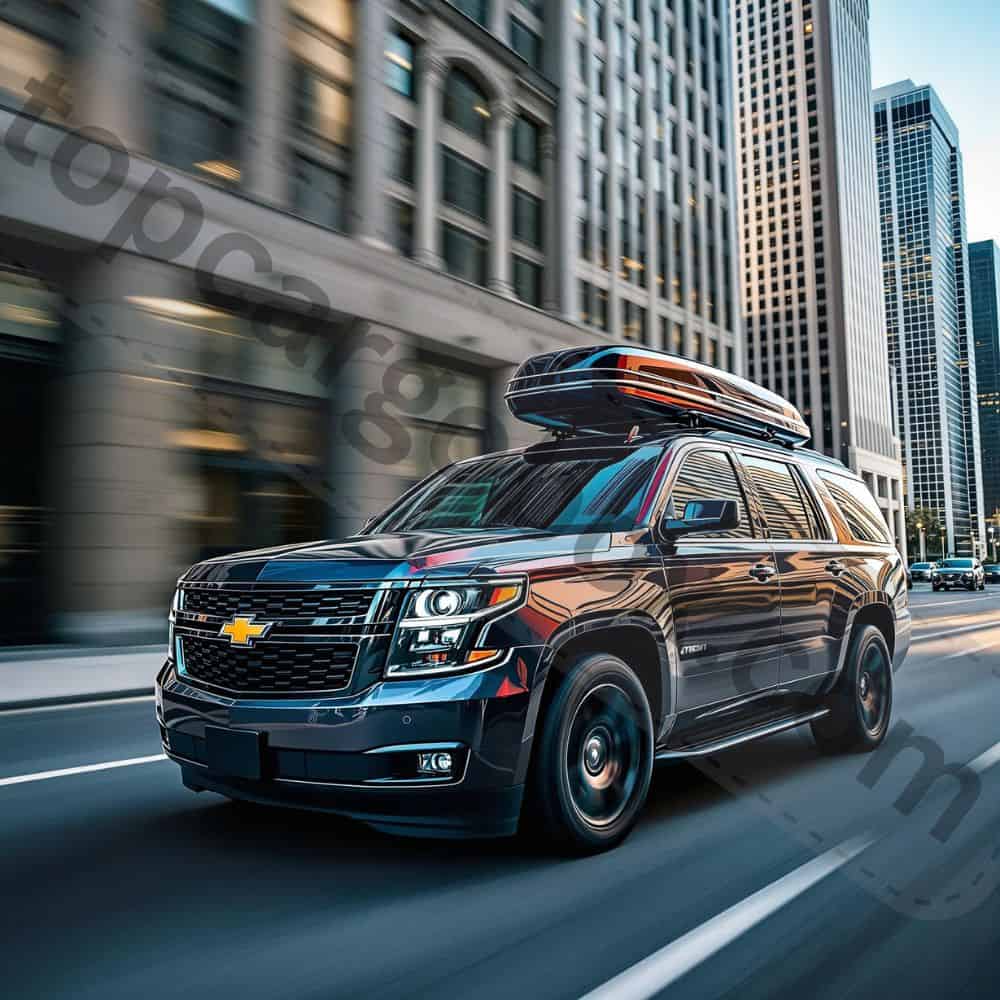
Who’s This Box Perfect For? (Spoiler: Probably You!)
Is the JEGS carrier your soulmate? Let’s see:
- Downsizers & Space-Crunched Drivers: Switched from a massive SUV or truck to something more efficient (like moving from a Yukon XL to an Acadia and suddenly missing 18 cu. ft. of cargo space)? This box instantly restores your lost capacity.
- Family Adventurers: Families packing for four or five people (plus gear!) know the struggle is real. Freeing up the entire rear cargo area for people, pets, or just not feeling claustrophobic is a game-changer. Packing for camping becomes way less stressful.
- Budget-Conscious Travelers: If you need serious extra space but can’t justify dropping a mortgage payment on a rooftop system, JEGS offers a fantastic balance of price, capacity, and durability. Get the storage you need without the financial hangover.
- Occasional Users: Don’t need a box living on your roof year-round? The JEGS is relatively easy to install and remove as needed. Its nestable design also makes off-season storage in the garage or shed super efficient. Perfect for seasonal trips or big holiday hauls.
A Few Things to Keep in Mind (Keeping it Real!)
Totally love this box, but let’s be fair – nothing’s absolutely perfect.
- Drilling Might Be Necessary: If your crossbar spacing isn’t adjustable to exactly 24 inches, you will need to drill new holes. It’s designed for this, but it’s an extra step. Take your time, measure carefully (using the bracket as a guide is smart!), and use a sharp drill bit. It’s totally doable, just factor in a little extra setup time. Not a big deal for most, but worth knowing.
- Lock Mechanism Feel: Some users note the corner locks require a bit of finesse. They work reliably, but turning the key might need a gentle jiggle. The front latch, while functional, feels simpler than some premium models. It does its job securing the lid, but a secondary pin hole would be a nice future upgrade for absolute peace of mind. Minor quibbles for the price, though!
- Double-Check the Opening Style!: JEGS sells both side-opening (like this one) and rear-opening models. Pay close attention when ordering! You want the side-opening version for easy access from either side of the car. Accidentally getting the rear-opening style if you have a tall vehicle or hatch would be a major bummer. Make sure the listing explicitly says “Side Opening” or “Dual-Side Access”.
Conclusion: Unlock Your Car’s True Potential
So, what’s the verdict? If you’re drowning in gear, tired of the packing panic, and want a massive, secure, weatherproof storage solution without taking out a second mortgage, the JEGS Rooftop Cargo Carrier is legitimately awesome. It delivers 18 cubic feet of intelligently designed, Made-in-USA storage that tackles road trips, camping adventures, and family moves with ease. The installation is straightforward (even with potential drilling), the on-road performance is impressively quiet and stable, and the cost savings compared to premium brands are substantial. Yeah, the locks might require a gentle touch, and drilling holes is an extra step for some setups, but these are minor trade-offs for the incredible value and functionality you get. Stop playing car Tetris. Ditch the stress. Grab a JEGS box, throw your gear up top, and actually enjoy the journey with all the space you need inside. Your next adventure just got a whole lot roomier. What are you waiting for?
Your JEGS Rooftop Box Questions Answered
Do I absolutely have to drill holes in the base?
How’s it going with your crossbars? If they are adjustable and you can set them exactly to 24 inches apart (center-to-center), then no drilling needed – awesome! However, if your crossbars are fixed or you need them spaced wider (like up to 30 inches) or narrower (down to 20 inches), then yes, you will need to drill new holes in the carrier’s plastic base. It sounds scarier than it is. The plastic drills easily. The manual covers it, and many users have done it successfully (one even went to 32 inches!). Just measure carefully, mark the spots well (using the mounting bracket as a template is smarter than the pre-printed marks), use a sharp bit, and take your time. It’s totally manageable and unlocks the flexibility to fit almost any roof rack. No big deal!
Will this thing make a ton of wind noise or kill my gas mileage?
For real? The aerodynamic design is a major plus. While any rooftop box adds some drag compared to nothing, users consistently report that the JEGS is surprisingly quiet. Phrases like “you just can’t tell it’s up there” and “drove as normal as can be” are common, even at highway speeds (80-85 mph). Compared to less aerodynamic boxes or bulky soft bags, the wind noise is minimal. Fuel economy impact is also reported as negligible by most – certainly not the “gas guzzler” effect some fear. The sleek shape slices through the air much better than old-school, boxy designs. You’ll likely notice the extra space way more than any extra noise or fuel cost.
Is the “Made in USA” and Lifetime Warranty legit?
Absolutely! This isn’t just marketing fluff. JEGS is a reputable performance automotive brand, and manufacturing this carrier in the USA allows for better quality control and materials sourcing. The HDPE plastic is thick and impact-resistant. The “limited lifetime guarantee” provides significant peace of mind against defects in materials or workmanship for as long as you own it. It shows JEGS stands behind the product’s durability. While it won’t cover damage from accidents or misuse, it means you’re getting a well-built box backed by a company committed to its performance. That’s a solid reason to choose it over unknown import brands.
Can I really fit 18 cubic feet of stuff up there?
You bet! 18 cubic feet is a lot of space. Think practical: users easily fit 4 sleeping bags, camp chairs, blankets, rugs, and more. JEGS says it comfortably holds 3 golf bags (up to 5 if stacked!). It easily swallows multiple large duffel bags, tents, sleeping pads, coolers, stoves, and bulky but lightweight gear. It’s perfect for freeing up your entire rear cargo area. Just remember the 110-pound weight limit – stick to softer, lighter items like luggage, bedding, and camping gear, not dense suitcases or toolboxes. Packing it smartly makes a huge difference, but the volume is absolutely real and incredibly useful.
Are the locks secure enough? They seem simple…
Fair question! The four corner keyed-alike locks are the primary security feature. While they might feel a bit less heavy-duty than the locks on a top-tier Thule Motion, they are legit locks that deter casual theft. They require the key to open, making it much harder for someone to quickly grab your stuff compared to a soft bag with just zippers. The front latch adds another layer securing the lid. For peace of mind at rest stops or hotel parking, they are definitely effective. Just remember, no rooftop box is a bank vault. The locks prevent opportunistic grabs, which is their main purpose. For the price and design, they provide solid, practical security. Using them is reliable, even if turning the key sometimes needs a gentle touch.
JEGS vs. Goplus Rooftop Boxes: Which Hard Shell Carrier Wins Your Roof?
Alright, let’s talk rooftop real estate! You’re squeezed for space, eyeing a hard-shell cargo box, and staring down options like the JEGS 18 Cubic Ft beast and the Goplus 14 Cubic Ft model. Both promise extra gear hauling, weather protection, and security, but they tackle it differently. Choosing the right one can feel overwhelming – trust me, I get it. What if you pick wrong and end up with a giant, expensive headache? Let’s break these two contenders down side-by-side, no fluff, just the real deal on specs, user gripes, and who each box actually works for. Buckle up!

JEGS

Goplus
Capacity & Core Purpose: Big Rig vs. Streamlined Hauler
- JEGS: The Volume King for Max Gear: How’s it going if you’re hauling everything including the kitchen sink for that epic two-week camping trip? The JEGS screams “18 cubic feet!“. That extra 4 cubic feet over the Goplus is legit massive. Think multiple bulky sleeping bags, family-sized tents, camp chairs, coolers, and duffels without breaking a sweat. Real users packed “4 sleeping bags, two umbrella chairs, some blankets, a rug” with room leftover. Downsized from a Yukon XL to an Acadia? This box replaces that lost 18 cu. ft. fast. It’s built for families or anyone needing to seriously unload their cabin, especially on longer trips or adventures where gear piles up. If maximizing every possible inch is your goal, JEGS is the heavyweight champ. Wondering how this compares to premium high-capacity boxes? We’ve got a solid breakdown of the Thule Motion 3 that hits similar size notes.
- Goplus: The Lighter Load Specialist: The Goplus offers 14 cubic feet – still totally useful, but definitely more compact. It shines for lighter packing needs: maybe two carry-ons, jackets, sleeping bags, or gear for a smaller group. One user successfully stored “two carry-on suitcases… along with a lot of light weight miscellaneous items” on a 5000-mile trip. Its narrower, longer profile (62.5″L x 30″W vs. JEGS’s 57″L x 38.5″W) can be an advantage on smaller vehicles or if wind profile is a major concern. It’s the “we need more space, but not a massive amount more” solution. Perfect for weekend getaways or supplementing a moderately packed SUV.
Construction & Durability: HDPE Tank vs. ABS/PC Contender
- JEGS: Heavy-Duty HDPE & American Muscle: JEGS leans on HDPE (High-Density Polyethylene) plastic. What’s the deal? It’s incredibly tough, impact-resistant, and naturally flexible. Think cutting boards or plastic lumber – this stuff can take a beating without cracking. Weighing in at 35 lbs, it feels substantial. The Made in USA tag isn’t just patriotic; it often signals tighter quality control and materials. Backed by a limited lifetime warranty, JEGS is betting big on its durability for the long haul. It’s built like a rugged toolbox meant for years of sun, rain, and highway grit. Users braved snow, rain, and high winds with zero complaints about integrity.
- Goplus: Lighter ABS/PC Blend: Goplus uses a combo of ABS (Acrylonitrile Butadiene Styrene) and PC (Polycarbonate). This makes it significantly lighter at 25 lbs, which is awesome for lifting onto the roof. ABS is common (think Lego bricks), offering good stiffness, while PC adds impact resistance (think bulletproof glass, just thinner!). However, ABS can be more prone to cracking in extreme cold or under severe impact compared to HDPE’s flexibility. The white color (common for ABS/PC boxes) might show dirt more than black HDPE but stays cooler in the sun. It feels sturdy, but the material blend doesn’t quite have the same “tank-like” reputation as thick HDPE. Still, users reported no leaks or damage through rain and heat on long trips.
Installation & Fitment: Drilling Flexibility vs. Strict Spacing Rules
- JEGS: Flexible but Might Need DIY: Here’s the potential grunt work: JEGS comes pre-drilled for 24-inch crossbar spacing. If your factory bars or aftermarket rack fits that? Sweet, no tools needed for mounting beyond tightening the clamps. But come on, how many vehicles have exactly 24-inch spacing? If yours doesn’t (like many SUVs with fixed or wider rails), you must drill new holes in the plastic base. The good news? It’s designed for this, accommodating 20 to 30-inch spacing (some users even pushed to 32″). It requires measuring carefully, marking (use the bracket, not just the pre-prints!), and drilling – a hassle, but totally doable. This flexibility is a huge advantage if your setup isn’t standard. Just factor in the extra time and a sharp drill bit.
- Goplus: Easier Install… If You Fit!: Goplus boasts easier installation with its quick-connect anchors. However, it comes with a major caveat: it only fits crossbars spaced between 17 and 22.8 inches apart. No drilling option here. If your bars are fixed wider (like many factory SUV racks) or narrower, you’re simply out of luck. One user with unadjustable Toyota bars found it “just 1 inch too short” and had to return it. The clamps themselves are praised as strong (“stronger than Thule”), but the strict spacing requirement is a critical disadvantage. Double and triple-check your crossbar distance before buying! Also, note the clamp size limits: bars must be < 3.1 inches wide and < 1.0 inch thick.
Security & Access: Locking Down Your Loot
- JEGS: Four-Corner Lockdown: Security is a big deal, right? JEGS uses a four-corner keyed-alike locking system plus a front bale latch. That means four physical locks securing the lid to the base around the perimeter. It’s a robust approach that deters casual thieves effectively. Users found the locks functional but sometimes needing a gentle jiggle to turn – they work, but don’t feel ultra-premium. The front latch is simple but effective. Keys stay with you, offering peace of mind at rest stops.
- Goplus: Dual-Side Convenience, Simpler Locks: Goplus features a “double-lock design,” typically meaning locks on both sides near the opening points, plus the central latch. It provides decent security but likely doesn’t match the four-point system of the JEGS for perimeter security. The dual-side opening is a standout feature, allowing easy access from either side of the vehicle. This is super convenient in tight spots! Remember: Don’t open both sides at the same time! Also, a key quirk: “The key can only be removed after the cover is closed and locked.” No accidentally driving off with the key in the lock!
On the Road Performance: Silence & Stability
- JEGS: Surprisingly Stealthy: For a big box, users rave about how little they notice the JEGS. Its aerodynamic shape minimizes wind noise and drag. Phrases like “you just can’t tell it’s up there” and “drove as normal as can be” are common, even cruising at 80-85 mph. Fuel economy impact was reported as negligible. Stability in crosswinds and rain was excellent, even on a 1400-mile trip through varied weather. It just works without fuss.
- Goplus: Efficient Cruiser (When Secured): Users also reported minimal wind noise and no significant hit to gas mileage (~23 mpg on a minivan at 80mph). The sleek design does its job. However, securing it correctly is paramount. One user gave a crucial warning: The locking clips on the clamps must be fully engaged and nothing stored on top of them. If they get knocked loose, the box can shift. Careful packing around the clamps is also needed due to their size. Once locked down tight, it performs reliably.
Weight Capacity & Packing Smarts
- JEGS: 110 lb Limit – Pack Light & Bulky: Don’t be fooled by the massive size; the weight limit is 110 lbs. This means prioritizing bulky, lightweight gear: sleeping bags, tents, pillows, clothes in duffels, camp chairs, air pads. Avoid dense suitcases or heavy equipment. Packing smartly within this limit lets you fully utilize that 18 cu. ft.
- Goplus: 165 lb Limit – More Weight Flexibility: Surprisingly, the smaller Goplus boasts a higher 165 lb capacity. This gives you more flexibility to pack slightly denser items if needed (though always stay safe and mindful of vehicle stability!). However, the user warning is critical: Overloading voids insurance in an accident due to top-heaviness. Stick to the limit! The internal layout requires awareness of the clamp locations when packing larger items.
The Bottom Line: Who Wins Your Roof?
- Choose JEGS 18 Cubic Ft If:
- You need MAXIMUM SPACE (18 cu. ft.) for bulky gear.
- Your crossbar spacing is NOT between 17-22.8 inches (requires drilling, but flexible 20-30″).
- You prioritize HDPE durability and Made in USA quality with a lifetime warranty.
- You drive in harsh weather and want proven toughness.
- You’re okay with potential minor lock fussiness and the drilling step.
- You’re comparing value against larger premium boxes like the Thule Motion 3 vs Competitors.
- Choose Goplus 14 Cubic Ft If:
- 14 cu. ft. is sufficient for your needs (lighter/more compact loads).
- Your crossbars are EXACTLY spaced between 17 and 22.8 inches.
- You value lightweight (25 lbs) for easier handling.
- You love the convenience of dual-side opening.
- You need the higher 165 lb weight limit (use responsibly!).
- The white color or specific aesthetics match your vehicle.
- You want potentially easier initial clamp installation (if spacing fits).
Real Talk: Disadvantages You Can’t Ignore
- JEGS Downsides: Requires drilling holes for most non-24″ racks. Lock mechanism can feel slightly finicky. Front latch is functional but basic. 110 lb limit requires careful packing despite the large volume.
- Goplus Downsides: Extremely strict crossbar spacing (17-22.8″) with no drilling option – a major dealbreaker for many. Internal space can be disrupted by clamp hardware. Potential for ABS cracking in extreme cold vs. HDPE. Requires vigilant checking of clamp locks to prevent shifting. Lower 14 cu. ft. volume.
Final Gear Grind
Both the JEGS and Goplus offer legit solutions to your cargo woes without the insane price tag of Thule or Yakima. Seriously, saving $1000+ feels awesome! The JEGS is the undisputed capacity king, built like a tank with ultimate mounting flexibility (post-drilling), ideal for families and gear hounds needing serious space who don’t mind a bit of DIY. The Goplus is the convenience pick if your rack fits its strict spacing, offering easier access, higher weight tolerance, and lighter weight for more streamlined trips. Measure your bars twice, be honest about how much stuff you really haul, weigh the durability factors, and you’ll know which box deserves your roof. Now go conquer that road trip without the trunk Tetris struggle! Wondering how these stack up against the premium players? Check out the Yakima SkyBox NX Skinny vs Thule for the high-end perspective.
JEGS vs. Goplus Rooftop Cargo Carrier Comparison Table
Feature | JEGS 18 Cubic Ft Cargo Carrier | Goplus 14 Cubic Ft Cargo Carrier |
|---|---|---|
Brand & Origin | JEGS (Made in USA) | Goplus (International) |
Material | HDPE Plastic (High-Density Polyethylene) | ABS + Polycarbonate (PC) |
Dimensions (L x W x H) | 57″ x 38.5″ x 17.75″ | 62.5″ x 30″ x 15″ |
Weight | 35 lbs | 25 lbs |
Capacity | 18 cubic feet | 14 cubic feet |
Max Weight Capacity | 110 lbs | 165 lbs (but real-world safe limit ~100 lbs) |
Water Resistance | Water-resistant (weather-tight seal) | Waterproof |
Locking Mechanism | 4-corner keyed-alike locks + front latch | Double-lock design (keyed) |
Opening Style | Single-side opening | Dual-side opening (convenient access) |
Aerodynamics | Boxier design, some drag reduction | Sleeker profile, minimal wind noise & drag |
Crossbar Compatibility | Fits 20″–30″ spacing (base can be re-drilled) | Only fits 17″–22.8″ spacing (not adjustable) |
Installation | No-tools assembly, pre-drilled holes | Quick-connect anchors, requires precise fit |
Durability | Heavy-duty HDPE, impact-resistant | ABS/PC blend, rigid but may not be as rugged |
Gas Mileage Impact | Moderate (due to wider shape) | Minimal (aerodynamic design) |
Best For | Large SUVs, trucks, heavy gear, off-road use | Compact SUVs, minivans, road trips |
Pros | – Higher capacity (18 cu ft) – More durable HDPE – Re-drillable for custom fits – Made in USA, lifetime guarantee – Better for heavy loads | – Lighter (25 lbs) – Dual-side access – Better aerodynamics – Waterproof – Higher claimed weight limit |
Cons | – Heavier (35 lbs) – Single-side opening – Boxier shape may increase drag | – Smaller capacity (14 cu ft) – Strict crossbar fit requirements – ABS/PC may not be as tough as HDPE – Weight limit may be overstated |
For more comparisons, check out our guides on Thule Force 3 and Thule Motion 3 vs. Competitors.
Our team is creating outdoor-gear relevant articles with passion. If our articles can help you to find the correct solutions for your questions, we will be happy about that. In the content creation process, we usually collect accurate and useful information online or offline to compile our content in an organized way. Consequently, we can guarantee that you can discover some expected answers to your questions. We appreciate your time on our site.

